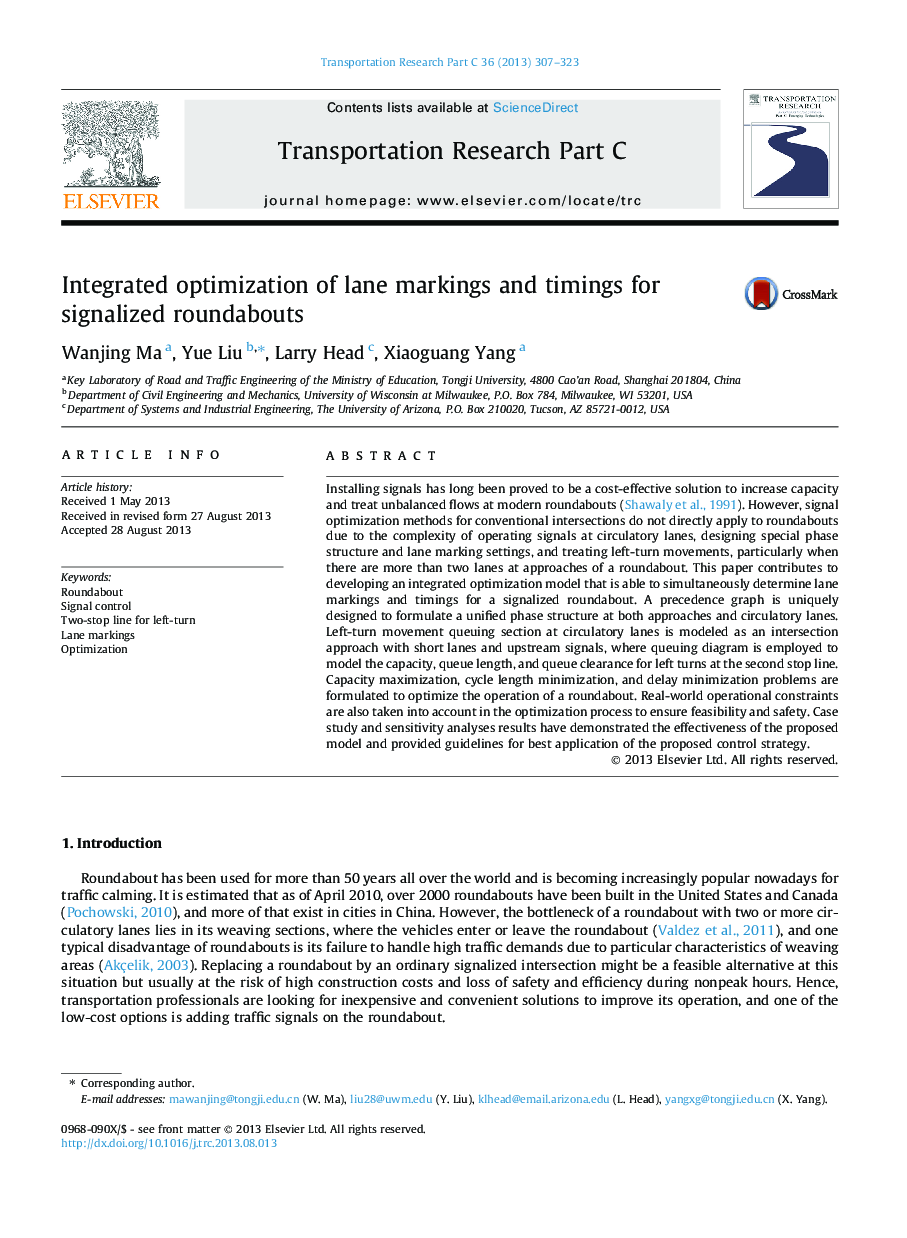| Article ID | Journal | Published Year | Pages | File Type |
|---|---|---|---|---|
| 6937282 | Transportation Research Part C: Emerging Technologies | 2013 | 17 Pages |
Abstract
Installing signals has long been proved to be a cost-effective solution to increase capacity and treat unbalanced flows at modern roundabouts (Shawaly et al., 1991). However, signal optimization methods for conventional intersections do not directly apply to roundabouts due to the complexity of operating signals at circulatory lanes, designing special phase structure and lane marking settings, and treating left-turn movements, particularly when there are more than two lanes at approaches of a roundabout. This paper contributes to developing an integrated optimization model that is able to simultaneously determine lane markings and timings for a signalized roundabout. A precedence graph is uniquely designed to formulate a unified phase structure at both approaches and circulatory lanes. Left-turn movement queuing section at circulatory lanes is modeled as an intersection approach with short lanes and upstream signals, where queuing diagram is employed to model the capacity, queue length, and queue clearance for left turns at the second stop line. Capacity maximization, cycle length minimization, and delay minimization problems are formulated to optimize the operation of a roundabout. Real-world operational constraints are also taken into account in the optimization process to ensure feasibility and safety. Case study and sensitivity analyses results have demonstrated the effectiveness of the proposed model and provided guidelines for best application of the proposed control strategy.
Keywords
Related Topics
Physical Sciences and Engineering
Computer Science
Computer Science Applications
Authors
Wanjing Ma, Yue Liu, Larry Head, Xiaoguang Yang,
